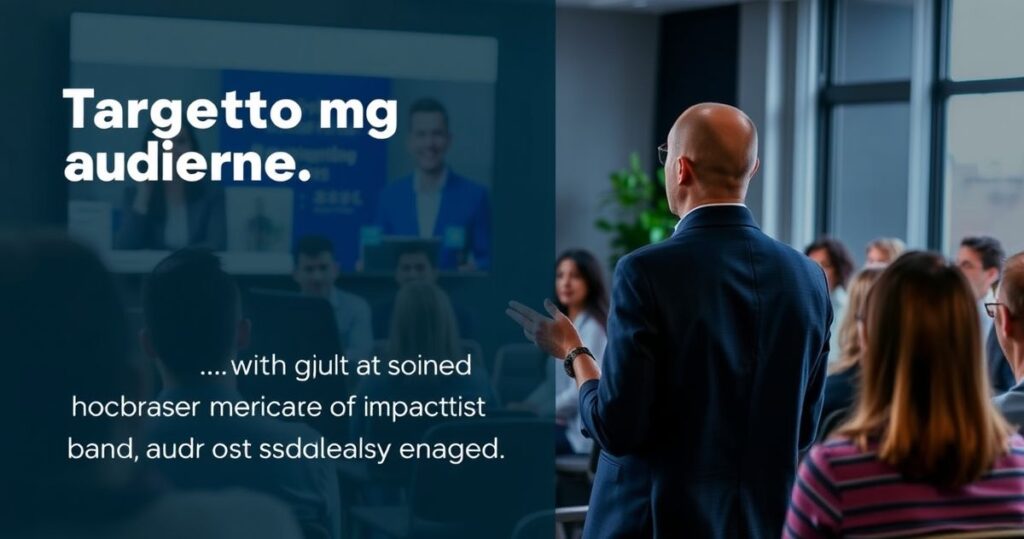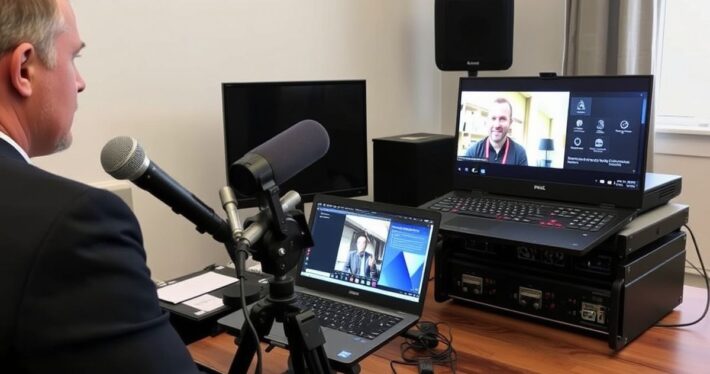How to Define Your Webinar Target Audience

Webinars are one of the most effective tools for building trust, educating your audience, and driving conversions. But here’s the thing: even the most polished webinar will fall flat if it’s not targeted to the right audience. Sounds obvious, right? Yet, so many webinar creators skip this critical step, focusing on flashy slides or scripting instead of understanding who they’re really speaking to.
Defining your webinar target audience isn’t just about demographics—it’s about understanding their pain points, goals, and behaviors. When you know exactly who you’re talking to, you can craft a webinar that resonates deeply, builds trust, and drives action. So, how do you do it? Let’s break it down step by step.
Why Defining Your Webinar Audience Matters
Before we dive into the how, let’s talk about the why. Imagine you’re hosting a webinar on “Advanced SEO Techniques for E-commerce.” If your audience is a mix of seasoned marketers and complete beginners, you’ll end up alienating both groups. The experts will feel it’s too basic, while the newbies will feel overwhelmed.
Targeting the wrong audience leads to:
- Poor engagement
- Low conversion rates
- Wasted time and resources
On the flip side, a well-defined audience allows you to:
- Tailor your content to their specific needs
- Use language and examples that resonate
- Craft offers that feel irresistible
Now, here’s where it gets interesting. Defining your audience isn’t just about who they are—it’s about understanding where they are in their journey and what keeps them up at night.
Step 1: Start with Your Goal
Every webinar should have a clear goal. Are you trying to generate leads, sell a product, or establish yourself as an authority? Your goal will shape how you define your audience.
For example, if your goal is to sell a high-ticket coaching program, your target audience isn’t just anyone interested in coaching—it’s people who’ve already invested in self-improvement and are ready to take the next step.
Pro Tip: Use your goal as a filter. Ask yourself: Who is most likely to take the action I want them to take?
Step 2: Research Your Ideal Audience
Okay, so you know your goal. Now it’s time to dig deeper into who your audience is. Here’s how:
Demographics and Firmographics (for B2B)
- Age, gender, location
- Job title, industry, company size
Psychographics
- Values, interests, and beliefs
- Challenges and pain points
- Goals and aspirations
Behavioral Data
- Buying habits
- Content consumption patterns
- Engagement with your brand
Let’s say you’re hosting a webinar for small business owners looking to streamline their operations. Your research might reveal that they’re overwhelmed by time management, struggle with delegation, and are tech-savvy but hesitant to invest in expensive tools.
Step 3: Create Audience Personas
Once you’ve gathered your data, it’s time to create personas—semi-fictional representations of your ideal audience members.
For example:
Persona: Sarah, the Overwhelmed Entrepreneur
- Age: 35
- Location: Chicago, IL
- Business: E-commerce store selling handmade goods
- Pain Points: Struggles with time management, juggling too many hats
- Goals: Wants to grow her business without burning out
Creating personas helps you visualize your audience and tailor your content to their specific needs.
Step 4: Validate Your Assumptions
Here’s the kicker: Your personas are only as good as the data behind them. If you’re making assumptions without validating them, you could be way off base.
How to validate:
- Survey your existing audience
- Conduct interviews with past webinar attendees
- Analyze social media and forum discussions
For instance, if you assume your audience prefers live Q&A sessions but find out they actually prefer pre-recorded content with downloadable resources, that’s a game-changer.
Step 5: Map Content to Their Journey
Once you’ve defined your audience, it’s time to create content that speaks to them at every stage of their journey.
Let’s break it down:
Awareness Stage
- Focus on education and solving their pain points
- Example: “5 Time-Saving Hacks for Small Business Owners”
Consideration Stage
- Showcase your expertise and position your solution
- Example: “How Automation Tools Can Save You 10 Hours a Week”
Decision Stage
- Present your offer and address objections
- Example: “Why Our Tool Is the Perfect Fit for Your Business”
Case Study: How Audience Targeting Doubled Conversion Rates
Let me share a real-world example. A client of ours was hosting a webinar for real estate agents but wasn’t seeing the conversions they wanted. After digging deeper, we discovered they were targeting all agents—whether they were new or experienced.
By narrowing the audience to agents with 1-3 years of experience and focusing on their specific pain points (like lead generation and client retention), we were able to:
- Increase attendance by 30%
- Double the conversion rate
The moral of the story? Precision targeting works.
Common Mistakes to Avoid
Even with the best intentions, it’s easy to make mistakes when defining your audience. Here are some pitfalls to watch out for:
- Being Too Broad: Trying to appeal to everyone means you’ll resonate with no one.
- Assuming Instead of Researching: Your assumptions might be completely wrong. Always validate.
- Ignoring Behavioral Data: What your audience does is often more telling than what they say.
Tools to Help Define Your Webinar Audience
While doing this manually is possible, there are tools that can make your life easier. Here’s a quick comparison:
| Tool | Best For | Key Features |
|---|---|---|
| Google Analytics | Behavioral data | Audience demographics, interests |
| SurveyMonkey | Direct feedback | Custom surveys, audience insights |
| Facebook Audience Insights | Social media behavior | Interests, engagement patterns |
| HubSpot CRM | Tracking interactions | Lead scoring, behavior tracking |
Final Thoughts: The Road to Webinar Success Starts Here
Defining your webinar target audience isn’t a one-and-done task—it’s an ongoing process. As your business evolves, so will your audience. Regularly revisit your personas, update your research, and refine your approach.
Remember, the more specific you are, the more effective your webinar will be. So, take the time to understand who’s on the other side of the screen. Your audience will thank you—and so will your conversion rates.



